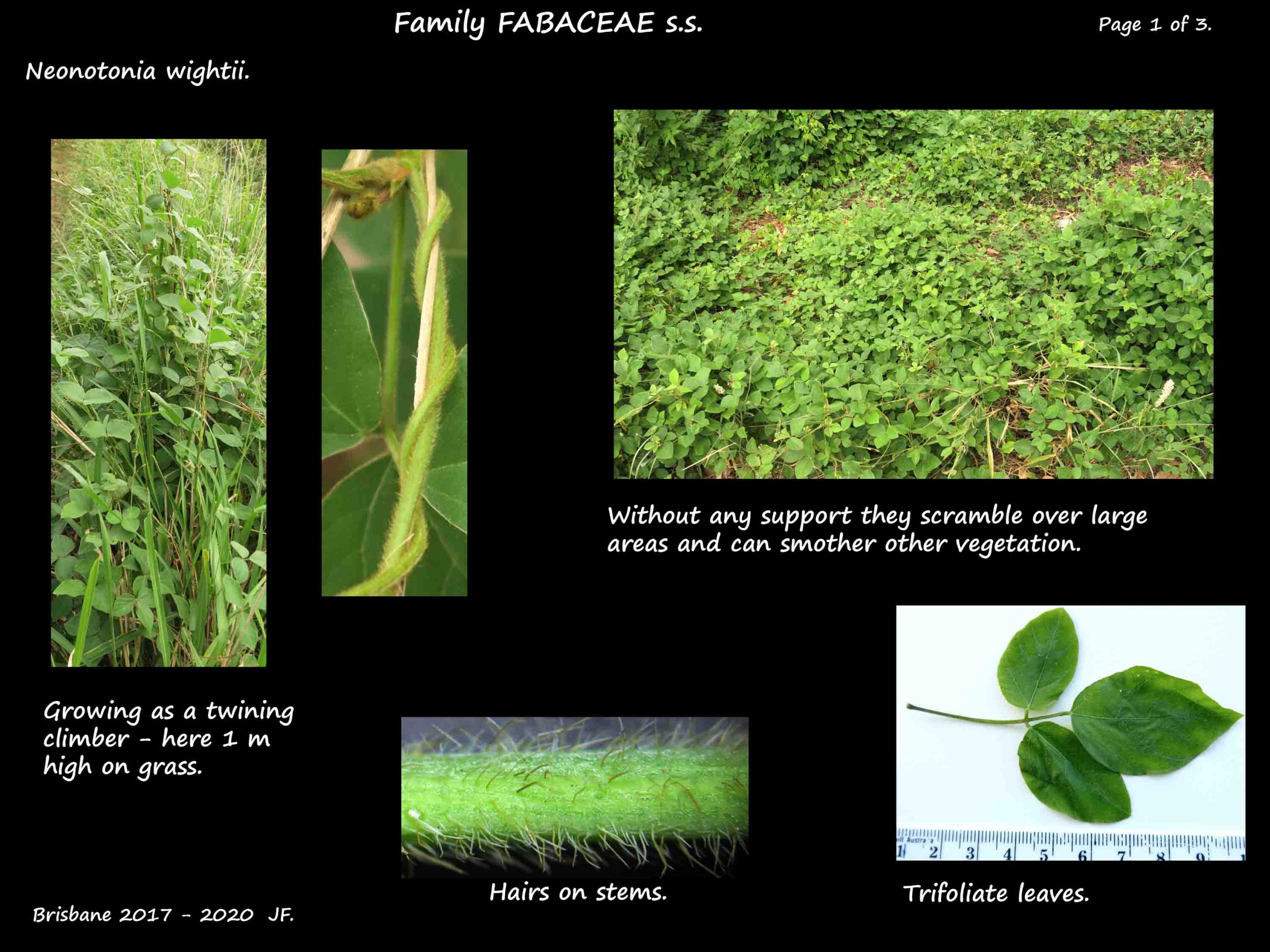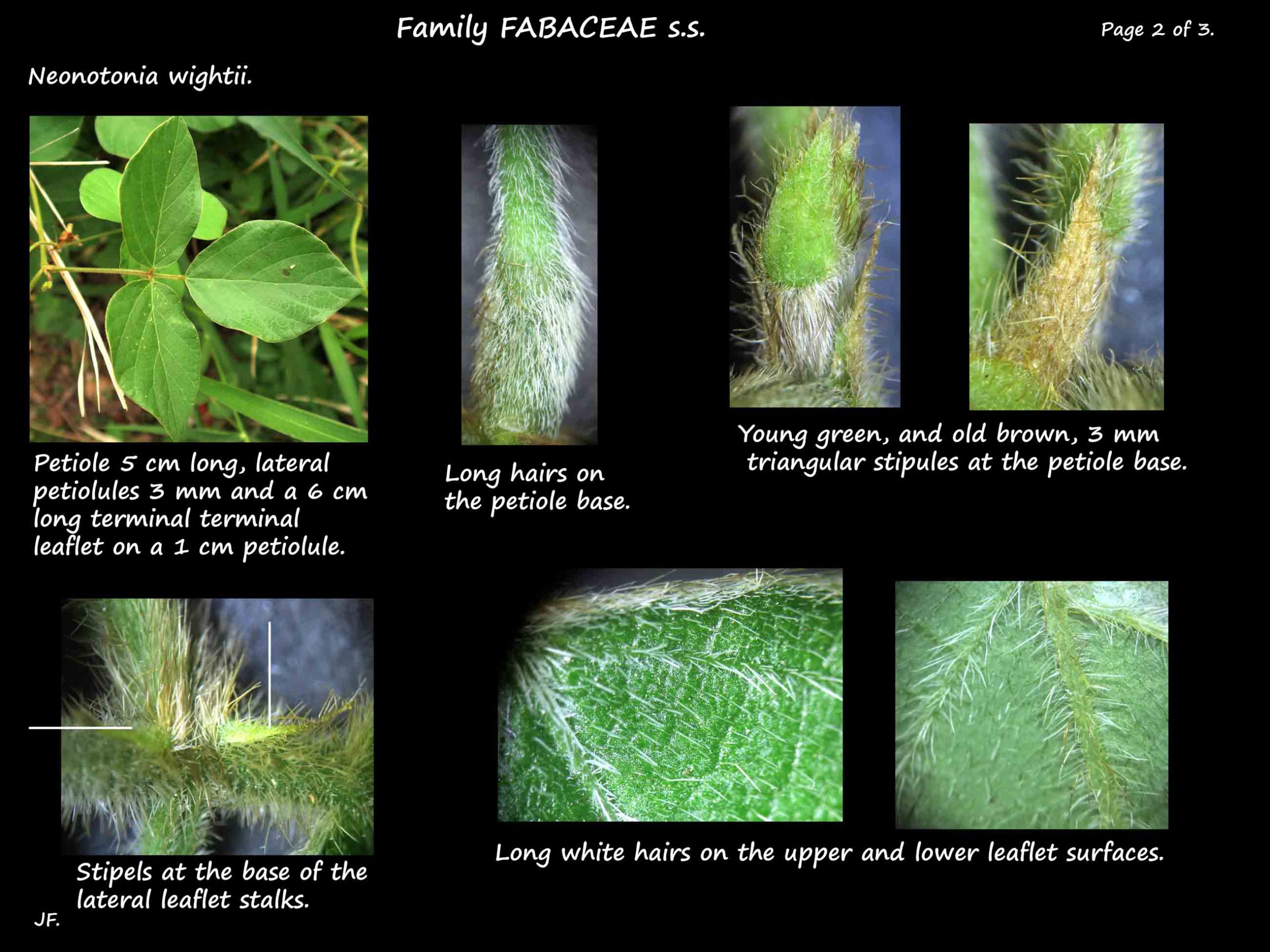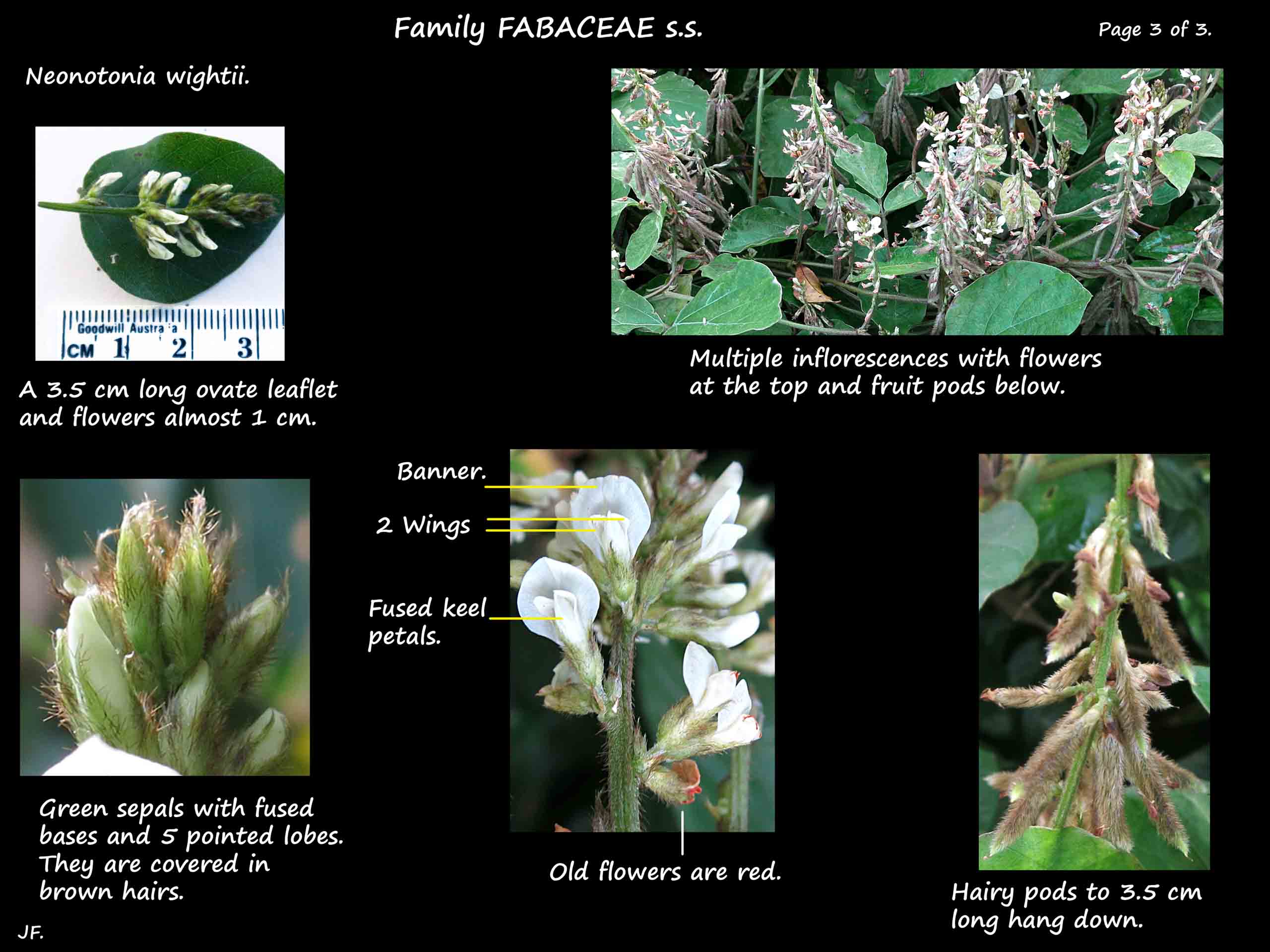Neonotonia wightii.
Neonotonia is a single species genus in Family Fabaceae s.s. (Family Fabaceae s.l. > Subfamily Faboideae).
Also known as Glycine wightii it is commonly known just as Glycine.
It is naturalised in S. E. Queensland where it is an environmental weed.
They are perennial herbs that grow as scramblers or twining climbers.
Stems can be up to 4.5 m long so one plant can cover a large area.
When dense they can smother other vegetation.
Young stems are green and older ones can become woody.
The stems (and leaves) can be smooth to densely covered in white or rust-coloured hairs.
The trifoliate leaves are alternately arranged.
Leaves are 3 to 15 cm long including a petiole that can be vary from 2 to 12 cm long.
There are densely hairy, triangular stipules around 3 mm long.
The ovate to elliptic leaflets can have rounded to pointed tips and may have an oblique base.
They are 5 to 15 cm long with the terminal leaflet being the largest.
Leaflet stalks are 3 to 10 mm long with that on the terminal leaflet being the longest.
There are small, hairy stipels at the base of the leaflet stalks.
Leaflets can occasionally be smooth but are usually hairy on both surfaces especially the lower.
Axillary inflorescences, on long hairy stalks (peduncles), are spikes up to 18 cm long.
The pea-like flowers, on hairy stalks (pedicels) 1 mm or so long, are at the top.
There are bracts at the base of the peduncle and bracteoles under the pedicels.
There are 4 or 5 sepals, up to 1 cm long, with their bases fused.
The lobes are long and pointed and the upper 2 may be largely fused.
The green sepals have rust-coloured hairs on both surfaces.
The upper standard petal is the largest being up to 5 to 10 mm long and slightly bilobed.
There are 2 side or wing petals and the 2 lowest petals are fused and folded together forming the keel.
The clawed petals are white and the standard may have yellow or purplish markings.
They become a reddish-purple as they die.
There are 10 alternating long and short stamens.
Nine have their filaments fused into a tube 2.5 mm long.
The remaining stamen is free.
The hairy ovary, on a very short stalk, has a sometimes curved style.
The fruit pods, up to 3.5 cm long and up to 5 mm wide, mature from green to dark brown.
They hang down almost parallel to the inflorescence stalk.
Occasionally smooth they are usually densely covered with long, brownish hairs.
Each has up to 9 dark brown, kidney-shaped seeds.
There are a number of cultivars used as pasture crops.
J.F.




